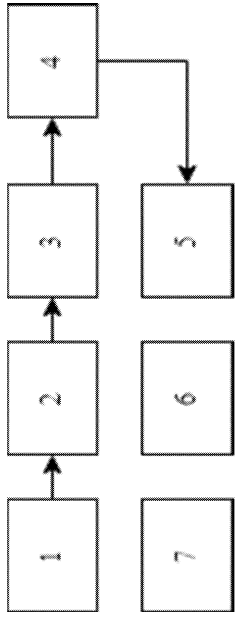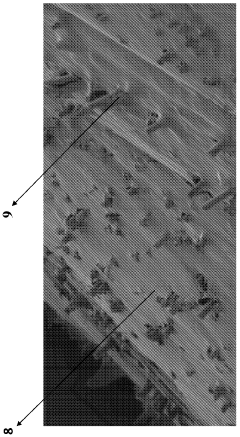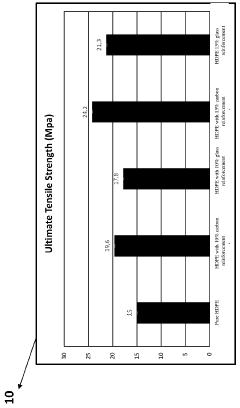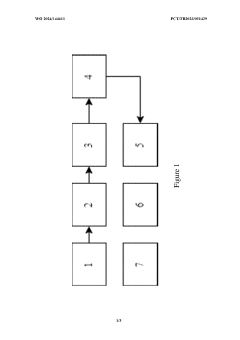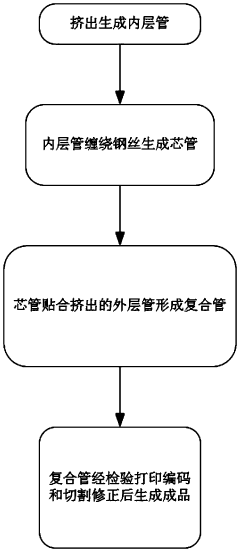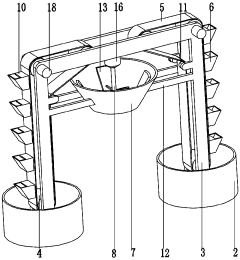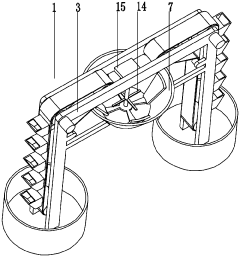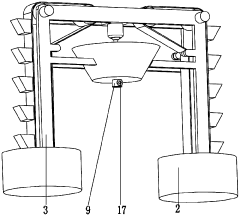How to Integrate HDPE in Automated Manufacturing Systems?
HDPE Integration Goals
The integration of High-Density Polyethylene (HDPE) into automated manufacturing systems represents a significant technological advancement in the plastics industry. The primary goal is to enhance production efficiency, reduce costs, and improve product quality through seamless incorporation of HDPE processing into automated workflows.
One key objective is to optimize the material handling and feeding systems for HDPE. This involves developing advanced conveying and dosing mechanisms that can accurately control the flow of HDPE pellets or powder into processing equipment. The aim is to achieve consistent material supply, minimizing variations that could affect product quality.
Another critical goal is to improve the heating and melting processes for HDPE in automated systems. This requires the implementation of precise temperature control mechanisms and energy-efficient heating technologies. The target is to achieve uniform melting of HDPE while minimizing energy consumption and preventing material degradation.
Enhancing the molding and forming capabilities for HDPE products is also a primary focus. This involves integrating advanced mold design, rapid cooling systems, and precise pressure control mechanisms into automated production lines. The objective is to produce complex HDPE parts with high dimensional accuracy and surface finish.
Implementing real-time quality control and monitoring systems is crucial for HDPE integration. This goal encompasses the development of in-line inspection technologies, such as vision systems and sensors, capable of detecting defects and variations in HDPE products during production. The aim is to minimize waste and ensure consistent product quality.
Improving the flexibility and adaptability of automated systems for HDPE processing is another important objective. This involves creating modular production lines and developing quick-change tooling systems that can accommodate different HDPE product designs and specifications. The goal is to enable rapid product changeovers and increase production versatility.
Enhancing the recycling and reprocessing capabilities within automated HDPE manufacturing systems is also a key target. This includes developing in-line recycling systems that can efficiently reprocess HDPE scrap and integrate it back into the production cycle. The aim is to minimize material waste and improve overall sustainability.
Lastly, the integration of HDPE in automated manufacturing systems aims to improve data collection and analysis capabilities. This involves implementing advanced sensors, IoT technologies, and data analytics platforms to gather and process production data. The goal is to enable predictive maintenance, optimize process parameters, and facilitate continuous improvement in HDPE manufacturing processes.
Market Demand Analysis
The integration of High-Density Polyethylene (HDPE) in automated manufacturing systems has seen a significant surge in market demand across various industries. This demand is primarily driven by the unique properties of HDPE, including its high strength-to-density ratio, excellent chemical resistance, and durability, which make it an ideal material for numerous applications.
In the packaging industry, there is a growing need for automated HDPE processing systems. The global HDPE packaging market is experiencing steady growth, with an increasing emphasis on sustainable and recyclable packaging solutions. Automated manufacturing systems that can efficiently process HDPE for packaging applications are in high demand, particularly in the food and beverage, personal care, and pharmaceutical sectors.
The automotive industry represents another significant market for HDPE integration in automated manufacturing. As automakers strive to reduce vehicle weight and improve fuel efficiency, the demand for HDPE components produced through automated processes has increased. This includes parts such as fuel tanks, interior trim, and under-the-hood components.
In the construction sector, there is a rising demand for HDPE pipes and fittings produced through automated manufacturing systems. The durability and corrosion resistance of HDPE make it an excellent choice for water supply, sewage, and gas distribution systems. The need for efficient, large-scale production of these components is driving the adoption of automated HDPE processing technologies.
The agriculture industry is also contributing to the market demand for HDPE integration in automated manufacturing. There is a growing requirement for irrigation systems, greenhouse films, and storage containers made from HDPE. Automated manufacturing systems that can produce these items at scale are becoming increasingly important to meet the needs of modern agriculture.
Market analysis indicates that the Asia-Pacific region is expected to witness the highest growth in demand for HDPE automated manufacturing systems. This is attributed to rapid industrialization, urbanization, and infrastructure development in countries like China and India. North America and Europe are also significant markets, driven by technological advancements and the need for more efficient manufacturing processes.
The trend towards circular economy and recycling is influencing the market demand for HDPE automated manufacturing systems. There is an increasing focus on developing automated processes that can efficiently handle recycled HDPE, addressing both environmental concerns and regulatory requirements.
Overall, the market demand for integrating HDPE in automated manufacturing systems is robust and diverse, spanning multiple industries and geographical regions. This demand is expected to continue growing as industries seek more efficient, sustainable, and cost-effective production methods for HDPE-based products.
HDPE Processing Challenges
High-density polyethylene (HDPE) presents several challenges when integrating into automated manufacturing systems. One of the primary difficulties lies in its thermal properties. HDPE has a relatively low melting point and a narrow processing window, which requires precise temperature control throughout the manufacturing process. This sensitivity to temperature fluctuations can lead to inconsistencies in product quality and potential equipment malfunctions if not properly managed.
Another significant challenge is HDPE's tendency to warp and shrink during cooling. This characteristic can cause dimensional inaccuracies in the final product, making it difficult to maintain tight tolerances in automated systems. The shrinkage rate of HDPE can vary depending on factors such as molecular weight and processing conditions, further complicating the manufacturing process.
HDPE's low surface energy also poses challenges in automated systems, particularly in processes that require adhesion or printing. This property can make it difficult to apply labels, coatings, or adhesives to HDPE products, necessitating additional surface treatment steps or specialized equipment within the automated line.
The material's high melt viscosity can create issues in injection molding and extrusion processes, which are common in automated HDPE manufacturing. This property can lead to increased wear on machinery components and may require higher injection pressures, potentially straining equipment and increasing energy consumption.
Furthermore, HDPE's susceptibility to stress cracking under certain conditions can be problematic in automated systems. This phenomenon can occur when the material is exposed to specific chemicals or subjected to prolonged stress, potentially leading to product failures if not properly accounted for in the manufacturing process.
The material's static charge accumulation tendency can also disrupt automated handling and assembly processes. HDPE products can attract dust and contaminants, affecting product quality and potentially interfering with sensors and other automated control systems.
Lastly, the variability in HDPE grades and additives used for different applications can necessitate frequent adjustments to automated systems. This variability may require flexible manufacturing setups capable of quickly adapting to changes in material properties, which can be challenging to implement in highly automated environments.
Addressing these challenges requires a comprehensive approach that combines advanced process control, specialized equipment design, and in-depth material knowledge. Manufacturers must carefully consider these factors when integrating HDPE into automated manufacturing systems to ensure efficient production and consistent product quality.
Current Automation Solutions
01 Composition and properties of HDPE
High-Density Polyethylene (HDPE) is a thermoplastic polymer with a high strength-to-density ratio. It is characterized by its long linear chains with minimal branching, resulting in higher tensile strength, stiffness, and chemical resistance compared to other polyethylene types. HDPE's properties make it suitable for various applications, including packaging, pipes, and industrial products.- Composition and properties of HDPE: High-Density Polyethylene (HDPE) is a thermoplastic polymer with a high strength-to-density ratio. It is characterized by its long linear chains with minimal branching, resulting in higher tensile strength, stiffness, and chemical resistance compared to other polyethylene types. HDPE's properties make it suitable for various applications, including packaging, pipes, and industrial products.
- HDPE blends and composites: HDPE can be blended with other materials or reinforced with fillers to enhance its properties. These blends and composites can improve mechanical strength, thermal stability, or specific functional characteristics. Examples include HDPE blended with other polymers, reinforced with fibers, or combined with nanoparticles to create materials with tailored properties for specific applications.
- HDPE processing techniques: Various processing techniques are used to manufacture HDPE products, including injection molding, extrusion, blow molding, and rotational molding. Each technique offers specific advantages for different product types and applications. Innovations in processing methods focus on improving efficiency, reducing cycle times, and enhancing the quality of HDPE products.
- Recycling and sustainability of HDPE: HDPE is recyclable and efforts are being made to improve its recycling processes and increase the use of recycled HDPE in various applications. Research focuses on enhancing the properties of recycled HDPE, developing more efficient recycling methods, and creating new applications for recycled materials to promote sustainability and reduce environmental impact.
- HDPE applications in specific industries: HDPE finds applications in various industries due to its versatile properties. It is used in packaging for food and beverages, chemical storage containers, pipes for water and gas distribution, automotive parts, and construction materials. Ongoing research explores new applications and improvements in existing uses, such as enhancing barrier properties for packaging or developing specialized HDPE grades for specific industrial needs.
02 HDPE blends and composites
HDPE can be blended with other materials or reinforced with additives to enhance its properties. These blends and composites can improve characteristics such as impact resistance, thermal stability, or specific mechanical properties. The resulting materials find applications in areas where standard HDPE may not meet all requirements.Expand Specific Solutions03 HDPE processing techniques
Various processing techniques are used to manufacture HDPE products, including injection molding, extrusion, and blow molding. Each method offers specific advantages and is suited to different product types. Innovations in processing techniques aim to improve efficiency, reduce waste, and enhance the quality of HDPE products.Expand Specific Solutions04 Recycling and sustainability of HDPE
HDPE is recyclable and efforts are being made to improve its recycling processes and increase the use of recycled HDPE in new products. This includes developing better sorting and cleaning methods for recycled HDPE, as well as finding new applications for recycled material to promote a circular economy and reduce environmental impact.Expand Specific Solutions05 HDPE applications in specific industries
HDPE finds applications in various industries due to its versatile properties. It is used in packaging, construction, automotive, and medical industries, among others. Specific applications include food packaging, water pipes, fuel tanks, and medical devices. Ongoing research focuses on expanding HDPE's use in new areas and improving its performance in existing applications.Expand Specific Solutions
Key Industry Players
The integration of HDPE in automated manufacturing systems is at a mature stage, with a growing market driven by increasing demand for lightweight, durable materials in various industries. The global HDPE market size is projected to reach significant volumes, indicating substantial opportunities for automation. Technologically, the field is well-developed, with major players like ExxonMobil Chemical Patents, Inc., SABIC Global Technologies BV, and Dow Global Technologies LLC leading innovation. These companies, along with others such as Borealis AG and Braskem SA, are continuously advancing automation techniques for HDPE processing, focusing on improved efficiency, quality control, and sustainability in manufacturing processes.
China Petroleum & Chemical Corp.
ExxonMobil Chemical Patents, Inc.
HDPE Processing Innovations
- A method involving the use of chopped carbon and glass fibers reinforced HDPE composite materials, processed through an extrusion device to create a composite filament suitable for additive manufacturing, which increases thermal conductivity and structural strength, allowing for more complex designs and reduced production costs.
- An automated production equipment and production method for HDPE steel frame composite pipes is designed, including inner pipe extrusion equipment, steel wire winding equipment, outer pipe extrusion equipment and inspection equipment online in sequence, automatically controlled by the console, combined with an automatic feeding machine and mixing barrel to realize automatic mixing and feeding of raw materials to ensure the automation and efficiency of the production process.
Environmental Considerations
The integration of High-Density Polyethylene (HDPE) in automated manufacturing systems necessitates careful consideration of environmental factors. HDPE, while widely used for its durability and versatility, presents both challenges and opportunities from an environmental perspective. The production process of HDPE involves the use of fossil fuels, contributing to greenhouse gas emissions and resource depletion. However, when integrated into automated manufacturing systems, there is potential for significant environmental benefits through improved efficiency and waste reduction.
Automated manufacturing systems can optimize the use of HDPE, minimizing material waste through precise cutting and molding techniques. This reduction in waste not only conserves raw materials but also decreases the energy required for production. Additionally, automated systems can be programmed to recycle and reuse HDPE scraps within the manufacturing process, further reducing environmental impact and promoting a circular economy approach.
The longevity and recyclability of HDPE products contribute positively to their environmental profile. When properly integrated into automated systems, HDPE components can be designed for easy disassembly and recycling at the end of their lifecycle. This design for recyclability is crucial in reducing the environmental footprint of HDPE products and aligns with growing global initiatives for sustainable manufacturing practices.
Energy efficiency is another critical environmental consideration in the integration of HDPE in automated manufacturing systems. Advanced automation technologies can optimize energy consumption during the HDPE processing stages, such as heating, molding, and cooling. By fine-tuning these processes, manufacturers can significantly reduce energy usage and associated carbon emissions.
Water usage and pollution control are also important factors to address. Automated systems can be designed to minimize water consumption in HDPE processing and implement closed-loop water recycling systems. This approach not only conserves water resources but also prevents the release of pollutants into local water bodies.
The integration of HDPE in automated manufacturing systems also opens up opportunities for the use of bio-based or recycled HDPE materials. Automated systems can be calibrated to handle these more environmentally friendly alternatives, potentially reducing the reliance on virgin petroleum-based HDPE. This shift towards sustainable raw materials can significantly lower the overall environmental impact of HDPE product manufacturing.
Lastly, the implementation of smart monitoring and control systems in automated HDPE manufacturing can lead to real-time environmental performance tracking. These systems can provide valuable data on energy consumption, waste generation, and material efficiency, enabling continuous improvement in environmental management practices. By leveraging this data, manufacturers can make informed decisions to further reduce their environmental footprint and comply with increasingly stringent environmental regulations.
Quality Control Strategies
Quality control strategies play a crucial role in the successful integration of HDPE (High-Density Polyethylene) into automated manufacturing systems. To ensure consistent product quality and process efficiency, manufacturers must implement robust quality control measures throughout the production cycle.
One key strategy is the implementation of in-line monitoring systems. These systems utilize advanced sensors and real-time data analysis to continuously assess the quality of HDPE materials and products during the manufacturing process. Parameters such as temperature, pressure, and material flow rates are closely monitored to detect any deviations from optimal conditions. This approach allows for immediate adjustments to be made, minimizing the production of defective parts and reducing waste.
Statistical Process Control (SPC) techniques are another essential component of quality control in HDPE automated manufacturing. By collecting and analyzing data from various stages of production, manufacturers can identify trends, patterns, and potential issues before they escalate into significant problems. SPC charts and tools help in maintaining process stability and reducing variability, ultimately leading to improved product consistency and reliability.
Non-destructive testing methods are particularly valuable for HDPE quality control. Techniques such as ultrasonic testing, X-ray inspection, and infrared thermography can be integrated into automated systems to detect internal defects, voids, or inconsistencies in HDPE products without compromising their integrity. These methods enable manufacturers to identify and address quality issues early in the production process, reducing the likelihood of defective products reaching customers.
Automated vision systems equipped with high-resolution cameras and advanced image processing algorithms play a vital role in surface defect detection. These systems can rapidly inspect HDPE products for visual imperfections, such as scratches, discoloration, or dimensional inaccuracies, ensuring that only products meeting specified quality standards proceed to subsequent stages of production or packaging.
Traceability is another critical aspect of quality control in HDPE automated manufacturing. Implementing a comprehensive traceability system allows manufacturers to track raw materials, production parameters, and finished products throughout the entire manufacturing process. This capability is invaluable for identifying the root causes of quality issues, facilitating targeted improvements, and ensuring compliance with regulatory requirements.
Regular calibration and maintenance of automated equipment are essential for maintaining consistent quality in HDPE manufacturing. Establishing a rigorous schedule for equipment checks, calibration, and preventive maintenance helps minimize downtime and ensures that all components of the automated system operate within specified tolerances.
By implementing these quality control strategies, manufacturers can effectively integrate HDPE into automated manufacturing systems, ensuring high product quality, process efficiency, and customer satisfaction. Continuous improvement and adaptation of these strategies in response to evolving technologies and market demands will be key to maintaining a competitive edge in HDPE manufacturing.
